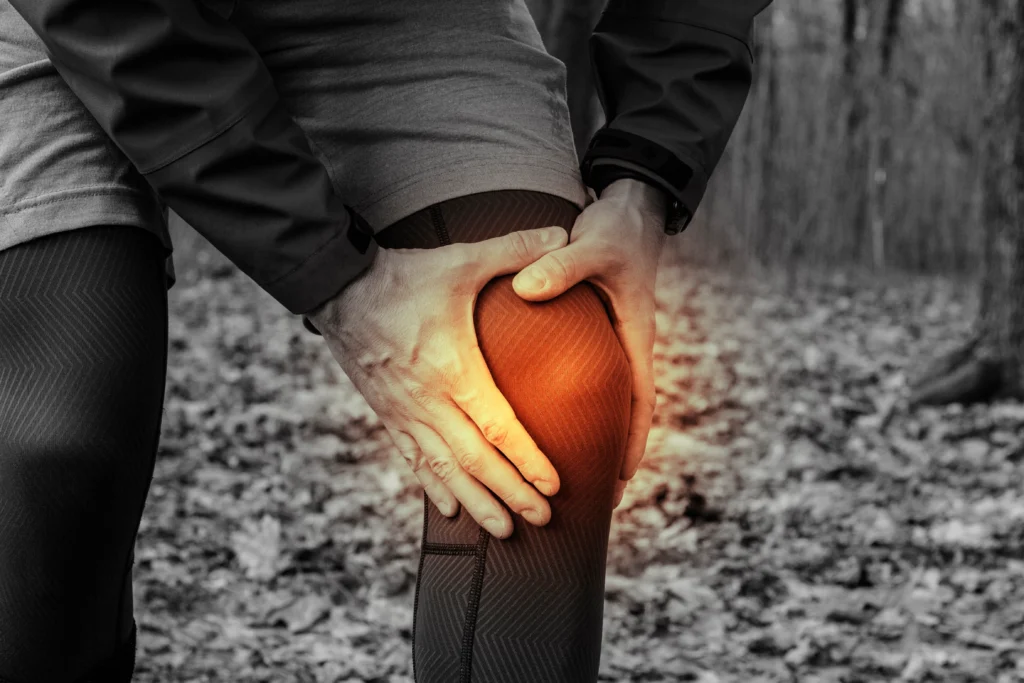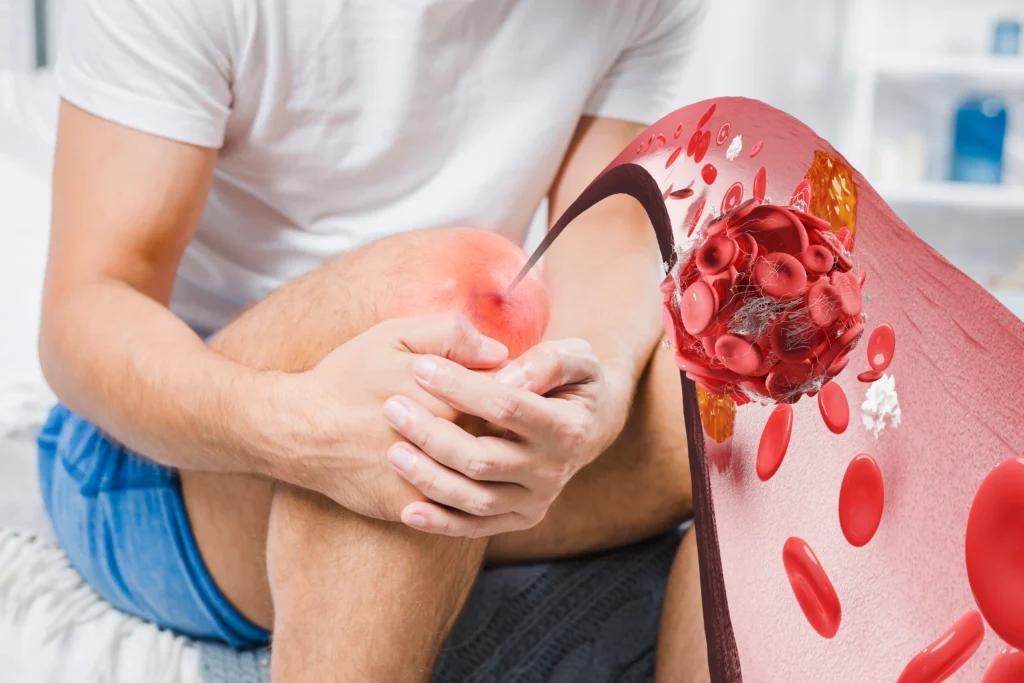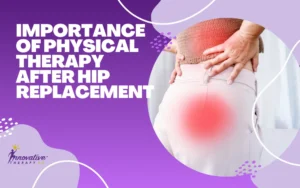If you are experiencing knee pain after hip replacement surgery, it is a concern that can raise questions about the success of the procedure and overall recovery. While some discomfort and changes in sensation are expected during the initial stages of rehabilitation, persistent or worsening knee pain may trigger anxiety for patients. Understanding the potential reasons behind post-hip replacement knee pain is crucial for both patients and healthcare professionals.
This article delves into the common queries surrounding this issue, exploring whether such discomfort is a normal part of the recovery process or indicative of underlying complications. It provides insights to aid individuals on their journey to optimal post-surgical well-being.
Why Do Knees Hurt After Hip Replacements?

Knee pain following hip replacement surgery may be caused by a variety of interrelated factors, which can affect both the muscular-skeletal and nervous systems. The following causes must be understood for effective management and patient satisfaction –
Altered Biomechanics
After hip replacement surgery, changes in the hip joint mechanics and gait patterns can inadvertently affect the knee joint. The body may adjust to the new hip joint, leading to altered weight distribution and increased stress on the knee.
Muscle Imbalances
Surgical intervention and subsequent rehabilitation can result in muscle imbalances around the hip and knee. Weakness or tightness in specific muscle groups may contribute to Knee Pain After Hip Replacement as the body adapts to the changes in movement.
Nerve Irritation
The shared network of nerves between the hip and knee can lead to referred pain. Surgical trauma or inflammation during the hip replacement procedure may irritate nerves that transmit signals to the knee, causing discomfort.
Pre-existing Knee Conditions
Patients with pre-existing knee issues, such as osteoarthritis, may continue to experience pain even after successful hip replacement. The surgery addresses the hip joint, but underlying knee conditions may persist.
Surgical Factors
Factors related to the hip replacement procedure, such as implant positioning or leg length differences, can influence the overall alignment of the lower extremities. Suboptimal alignment may contribute to knee pain.
Rehabilitation Issues
Inadequate rehabilitation, including insufficient postoperative exercises or improper form during exercises, can lead to muscle weakness or imbalance. This, in turn, may contribute to knee discomfort during the recovery process.
These factors can help healthcare professionals tailor rehabilitation plans for knee pain after hip replacement and other similar concerns.
Is It Possible For Pain To Occur Elsewhere?

Yes, it is indeed possible for pain to manifest in areas other than the site of a surgical procedure, such as in the case of hip replacement surgery. Referred pain, a phenomenon where discomfort is felt in a location distant from the actual source of the issue, can occur. In the context of hip replacement, patients may experience pain in their knees despite the surgery focusing on the hip joint. This can be attributed to the interconnected network of nerves that serve both the hip and knee regions.
Surgical trauma, inflammation, or irritation during hip replacement may affect adjacent nerves, leading to sensations of pain in the knee. Additionally, changes in biomechanics and gait patterns after hip surgery can inadvertently place stress on the knee joint, contributing to discomfort. Understanding the potential for referred pain and considering the intricate relationships within the musculoskeletal system is crucial for healthcare professionals in addressing and managing postoperative discomfort effectively.
Knee Pain After Hip Replacement: How To Manage It?
Effectively managing knee pain after hip replacement involves a comprehensive approach tailored to individual circumstances. First, accurate diagnosis is crucial to identify the specific cause of the discomfort. Physical therapy plays a vital role in addressing muscle imbalances, improving joint stability, and enhancing overall mobility. Targeted exercises can strengthen surrounding muscles and promote proper biomechanics.
Pain management strategies may include the use of nonsteroidal anti-inflammatory drugs (NSAIDs) or other prescribed medications to alleviate inflammation and discomfort. Adjusting daily activities and adopting proper body mechanics can help reduce stress on the knee joint. In some cases, additional imaging or consultation with specialists may be necessary to rule out underlying issues.
How Long Does It Usually Take To Recover From A Hip Replacement?

The recovery timeline after a hip replacement can vary depending on factors such as the patient’s overall health, age, and adherence to rehabilitation protocols. Generally, initial postoperative recovery takes a few weeks, during which patients focus on regaining mobility and gradually increasing activity levels. Most individuals can expect to resume light activities within 6 to 8 weeks.
While significant improvement is often seen in the first few months, complete recovery and the attainment of maximal strength and function may take several months to a year. Full recovery also depends on the extent of rehabilitation, compliance with postoperative guidelines, and the absence of complications. Patients must follow their healthcare provider’s recommendations, including physical therapy and exercise regimes, for optimal and sustained recovery. Regular follow-up appointments allow for monitoring progress and adjusting the rehabilitation plan as needed.
How Long Should I Elevate My Leg After Hip Replacement?
Elevating your leg after hip replacement surgery is typically recommended for the first few days to minimize swelling and promote healing. While individual circumstances may vary, it’s common to maintain leg elevation for about 30-60 minutes at a time, multiple times throughout the day during the initial days post-surgery. This practice helps reduce fluid accumulation and discomfort around the surgical site. However, it’s crucial to follow the specific instructions provided by your healthcare team.
As your recovery progresses, the need for consistent leg elevation may decrease. Still, it remains essential to strike a balance between rest and gradually increasing mobility to support a successful rehabilitation process.
How Much Swelling Is Normal After Hip Surgery?
Swelling is a common occurrence after hip surgery, and the extent can vary among individuals. In the initial days and weeks post-surgery, moderate to significant swelling around the hip and surgical site is normal. This is often a natural response to the trauma of surgery. However, the Swelling After Hip Replacement should gradually subside as the healing process progresses. Elevating the leg, applying ice packs, and following prescribed medications can help manage swelling. If swelling persists or becomes severe, it’s crucial to communicate with your healthcare provider, as excessive swelling could indicate potential issues such as infection or other complications that may require attention to ensure a smooth recovery process.
What Causes Swelling In Leg After Hip Replacement?
Surgical trauma and the body’s inflammatory response are the critical reasons for Swollen Leg After Hip Surgery. The procedure can lead to increased blood flow and fluid accumulation in the tissues around the hip, resulting in swelling. This is a normal part of the healing process. However, if swelling persists or worsens, it may indicate complications such as infection or blood clot, necessitating prompt evaluation by healthcare professionals. Elevating the leg and following postoperative care guidelines help manage and reduce swelling.
FAQ More About Knee Pain After Hip Replacement
What Is The Most Common Pain After Hip Replacement?
The most common pain after hip replacement is surgical site discomfort, typically experienced during the initial recovery period. Pain often diminishes over time as the healing process progresses.
Should I Walk Everyday After Hip Replacement?
Yes, you are walking every day after hip replacement is generally recommended. It promotes blood circulation, aids in recovery, and helps prevent complications. Follow your surgeon’s advice and gradually increase activity based on your progress.
Can Knee Replacement Aurgery Alleviate Knee Pain After Hip Replacement?
While knee replacement may address knee issues, it’s crucial to consult with a healthcare professional to determine its suitability post-hip replacement.
Are Hip Problems Common Factors Contributing To Knee Pain After Hip Replacement?
Yes, hip problems such as altered biomechanics or muscle imbalances can exacerbate knee discomfort post-hip replacement.
Is It Normal To Experience Some Swelling And Initial Pain At The Joint After Hip Replacement Surgery?
Yes, some swelling and initial discomfort are common following hip replacement surgery. However, persistent or worsening symptoms should be discussed with your healthcare provider.
Why Has Little Been Reported About Knee Pain After Hip Replacement?
Knee pain after hip replacement may vary among individuals, and research on this specific topic may be limited. Consulting with a healthcare professional can provide personalized insights and management strategies.
What Are Some Effective Ways To Alleviate Knee Pain After Hip Replacement?
Physical therapy, proper rehabilitation, and lifestyle modifications can help manage knee pain post-hip replacement. It’s essential to follow the guidance of healthcare professionals for optimal results.
Conclusion
Get relief from knee pain after hip replacement with Innovative Therapy PC. Put yourself in a position of comfort and mobility. Schedule a consultation today to explore personalized and effective therapies, guiding you to a smoother post-surgery recovery journey. Your well-being is our priority.






